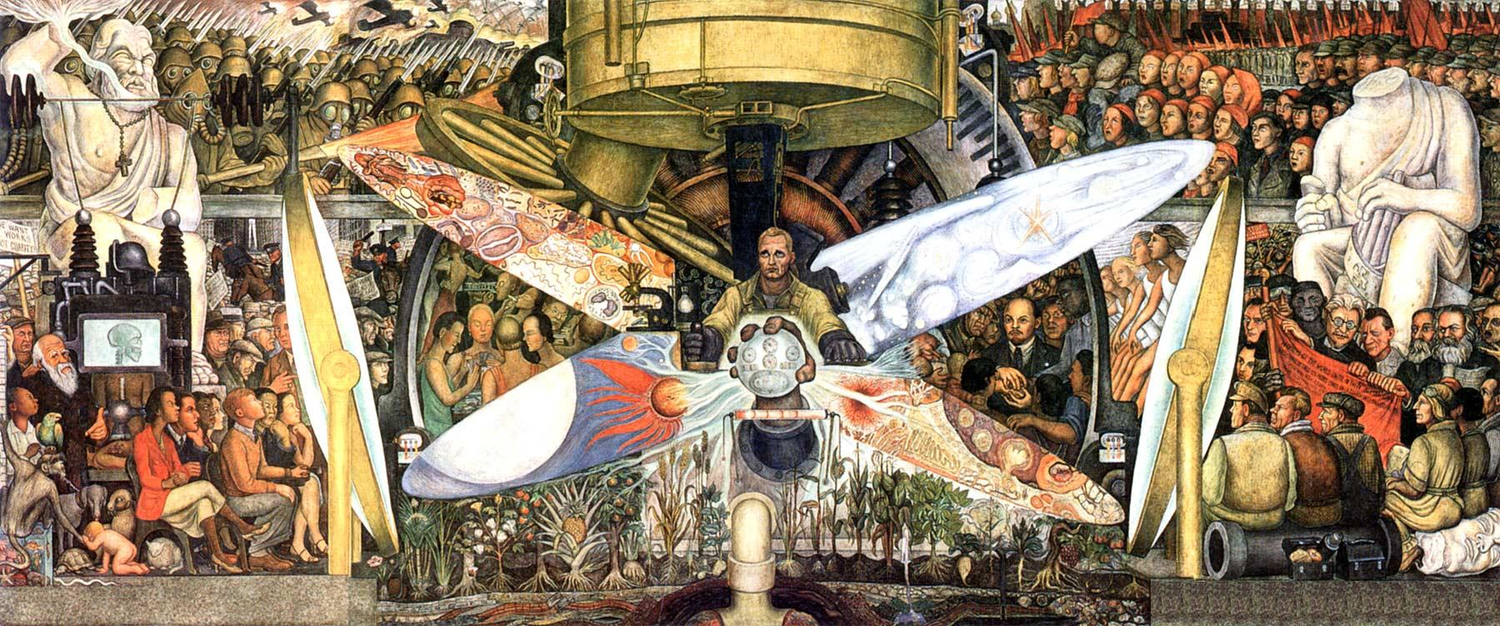Man, Controller of the Universe. Image under Creative Commons license available on Wikimedia Commons
Controller of the Universe? A Reading List on Labour and Technology
By Julian Posada
In this three part reading list, I provide context for some of the most pressing issues that workers today face related to widespread applications of artificial intelligence, the expansion of the gig economy, and how technology effects—and may affect—migration.
In the early 1930s, John D. Rockefeller Jr. hired Mexican artist Diego Rivera to paint a fresco in the newly constructed Rockefeller Center in New York City. The commissioned work, Man at the Crossroads, would represent socialism and capitalism in opposite panels, with a worker at the centre controlling machinery. As a committed socialist, Rivera used the fresco to portray his critique of wealth accumulation and elevate worker organization. The mural included several portraits, including Darwin, Marx, Engels, and Trotsky. However, the tipping point for the Rockefellers was the inclusion of a picture of Lenin, which the artist concealed in the blueprints. Rivera’s refusal to eliminate the portrait delayed the initially scheduled unveiling on May 1st, 1933. Eventually, the Rockefellers decided to dismiss Rivera and cover the uncompleted artwork until it was destroyed almost a year later.
Concerned that the mural would be destroyed, Rivera had it photographed before it was covered. Later in 1933, he convinced the Mexican authorities to let him paint a copy titled Man, Controller of the Universe in the newly constructed Palacio de Bellas Artes (Fine Arts Palace) of Mexico City. The composition remained almost the same, but the change of title suggests a shift in focus from the “crossroads” of economic and social development on the sides of the piece to its centre, where a worker harnesses technology to control nature, and a human fist holds an atom nucleus.
Seen as a whole, the fresco is a reminder that the wonders capable of humans with technology still depend on the complex and conflicting nature of society. The crossroads and the struggle for control represented by Rivera are still relevant almost a century later when exploring the intersection of labour and technology. In the following sections, I will provide a few references to explore how power manifests in labour and technology with a focus on artificial intelligence, the gig economy, and migration.
Part I: Artificial Intelligence
Even AI requires workers to functionIn
2012, a team of computer science students from the University of Toronto submitted an algorithm to the ImageNet challenge. ImageNet is a dataset of fourteen million categorized images, and the challenge tested the best image recognition algorithms that would identify the categories by scanning the files. The students’ algorithm, trained following a machine learning method called “deep learning,” scored more than 10% over other competitors. Soon, machine learning, a subset of artificial intelligence, gained momentum in Silicon Valley, and now we see many of its applications: from self-driving cars riding in the streets to virtual assistants in every smartphone.
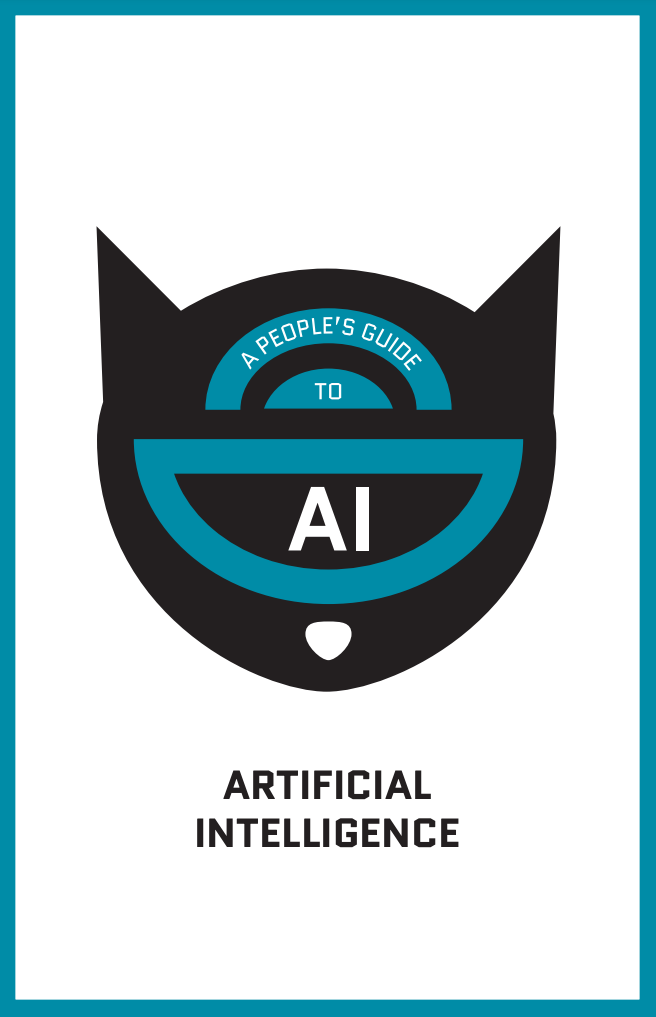
Image under Creative Commons license.
To understand what artificial intelligence is, its limits, and its impacts on society, entry #1 is A People’s Guide to AI written by Brooklyn-based artist, researcher, and technologist Mimi Onuoha and Detroit-based organizer and artist Mother Cyborg. I have been an avid follower of Onuoha’s work since I discovered her exhibit The Future is Here (2019) on the internet, which focused on the human labour behind dataset creation (more on this below!).
Onuoha and Mother Cyborg’s booklet is an introduction to common technology terms like “algorithm” or “machine learning” but also social ones like “structural racism” and applications of AI in society like “predictive policing.” This contextualization of AI within society, a critical view of the types of intelligence and the applications that AI promotes, and its limits and dangers for communities and individuals are some of the highlights of this text. The booklet is also interactive and provides space for readers to reflect and share their thoughts on the issues it describes.
This work is essential because assessing the harms and risks of artificial intelligence does not depend only on computer scientists and engineers but on everyone. This booklet not only explains terms and issues but also communicates to the reader that their opinion matters.
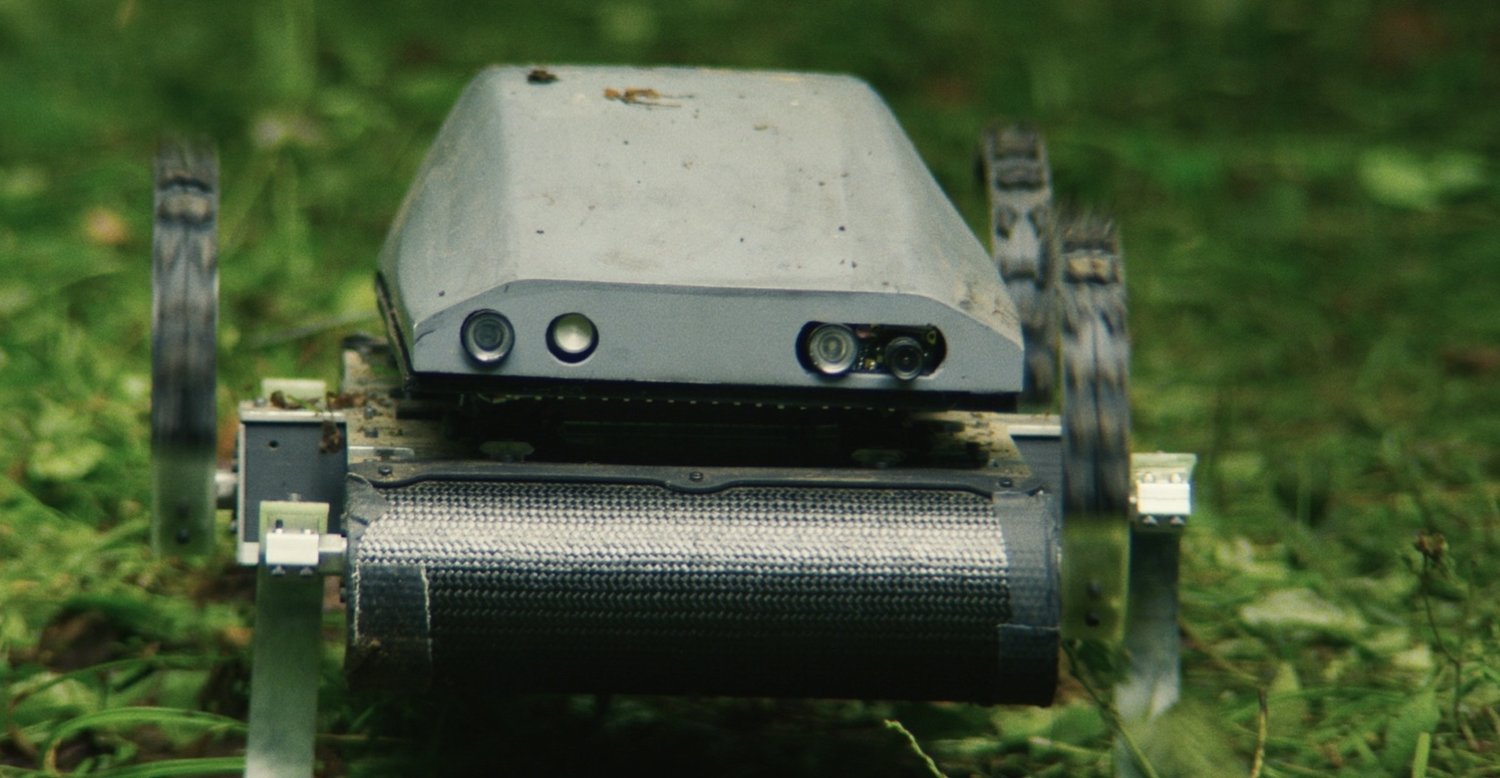
Lapsis (2020) still, screening at Mayworks Festival 2022.
Since AI is here, does it mean we have to brace ourselves for massive automation and unemployment? Entry #2 is a video titled The big debate about the future of work, explained, posted five years ago (a long time by tech industry standards but still relevant). Vox journalist Joss Fonn interviews Heidi Shierholz, a senior economist at the Economic Policy Institute and previous Chief Economist at the US Department of Labor under Barack Obama, and Martin Ford, a futurist and author of several technology books, to discuss their differing views on automation and the future of work.
I commend that this video provides a historical context on why technological developments in the past century have not led to massive unemployment (without spoiling the video much, the economic expansion foments the creation of new jobs, notably in the service sector and in areas related to the new technologies, thus, workers are displaced but not replaced). The big question is about the future: will new technologies like the contemporary applications of AI be different this time? So far, the COVID-19 pandemic has proved more disruptive than other technological developments and, as mentioned by the next entry, #3, even AI requires workers to function. Automation anxiety is not new, and Fonn’s video provides a broad view of how the danger of technology is not when it will replace humans but if it will benefit a few over most.
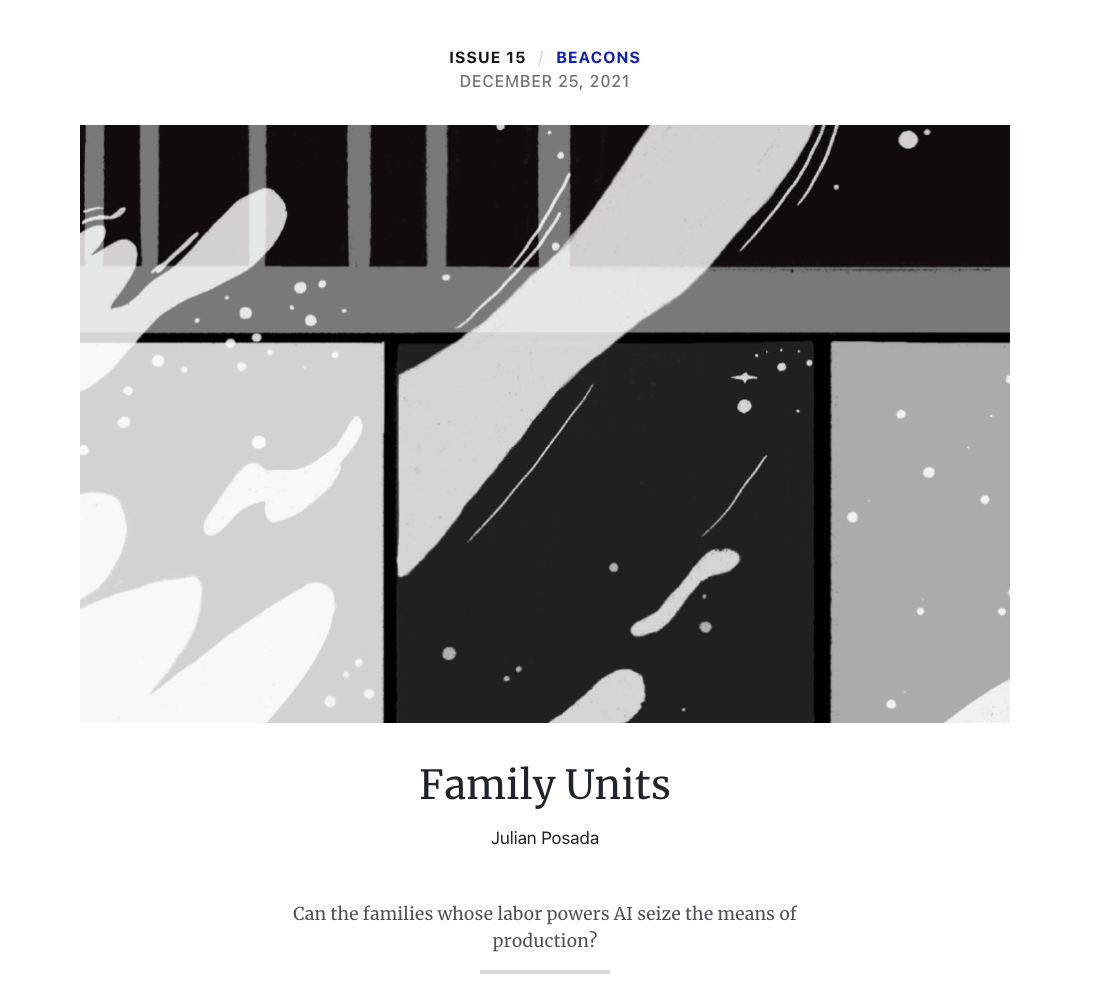
Image used with permission of Logic Magazine
In the Vox video, Fonn explains that technologies often create new jobs instead of only replacing them. For example, machines require mechanics to repair them. In the case of artificial intelligence, notably machine learning, because the technology needs data to function, humans are tasked with generating, annotating, and verifying the data.
In entry #3 the Logic Magazine article Family Units, I explore how AI companies in North America, Europe, and Australia outsource these tasks to the countries most impacted negatively by the legacies of colonialism, especially those experiencing economic crises and hardships like Venezuela. In my research I found that this country hosted most of the web traffic for data work in the world outside of the United States. Incentivized by the economic crisis that the country has experienced since 2016, high unemployment exacerbated by the COVID-19 pandemic, and an infrastructure built during times of high oil revenue, technology companies found Venezuela as the best place where they could recruit workers considered “cheap” and “disposable.” They are paid a few cents of a US dollar per task, constantly monitored by algorithms, and can be fired at any time and without recourse. In this article, I also explain how entire families, including children, provide the “data work” for artificial intelligence from their homes and how their support and that of neighbours and worker organizations are fundamental to enable the right environment to work.
Following the workerist idea of the “social factory,” in which capital requires the labour of the whole of society to create wealth, and inspired by the Marxist feminist notion of “social reproduction” that highlight the labour of women and marginalized members of society, this article provides several accounts on why AI does not only depend on workers themselves but on the labour of their families, neighbours, and colleagues as well. For many, to have time to work as a “freelancer” without the support of the employees and the government, it means that someone is cooking, taking care of children, helping with tasks, and providing basic public services and resources.
Part II: Organizing in the Platform Economy
Understanding of the plurality of manifestations of worker power in the global gig economy
Data work in Venezuela is outsourced through digital platforms, which, according to David B. Nieborg, Thomas Poell, and José Van Dijck, are reprogrammable digital infrastructures that act as intermediaries between different users and involve the collection and processing of data. Platforms that participate as intermediaries between those providing work and those requesting it are part of the so-called “gig economy” and, besides data work platforms, it includes ride-hailing services like Uber and delivery ones like SkipTheDishes.
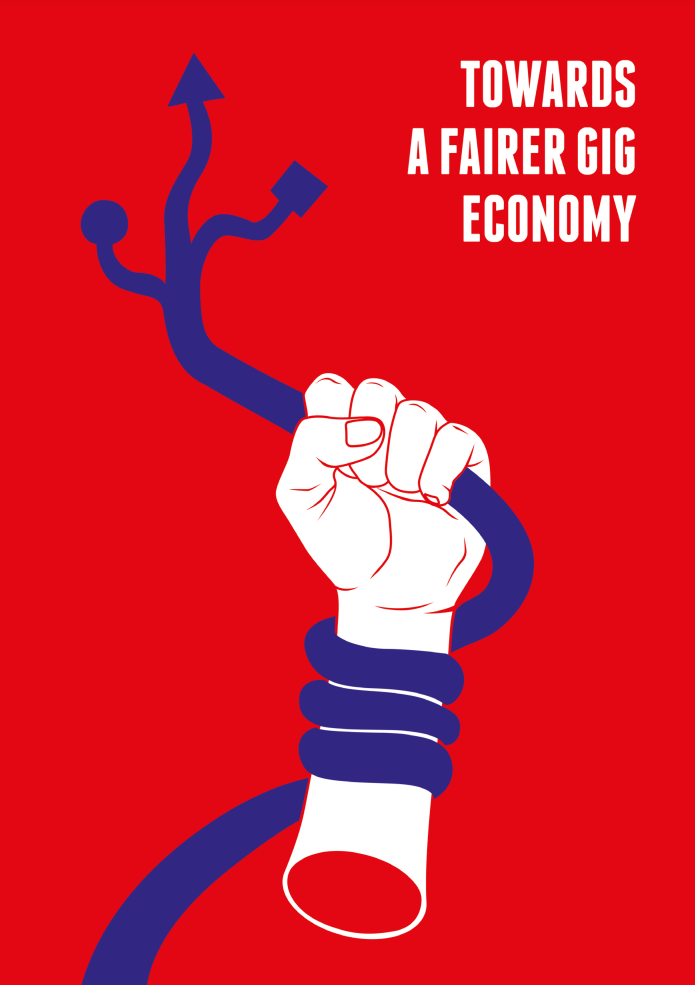
Image under Creative Commons license.
Entry #4, the first on the platform economy is the booklet Towards a Fairer Gig Economy, edited by Mark Graham and Joe Shaw from the University of Oxford. The booklet contains short chapters from gig workers, union organizers, academics, and policymakers from different countries. I recommend it because it provides first-person accounts on some of the issues in the contemporary gig economy as well as initiatives for fair platforms, including platform cooperatives, where workers are owners and have a voice in the operations, and initiatives on how to enshrine rights for gig workers (like the right to refuse) in policy.
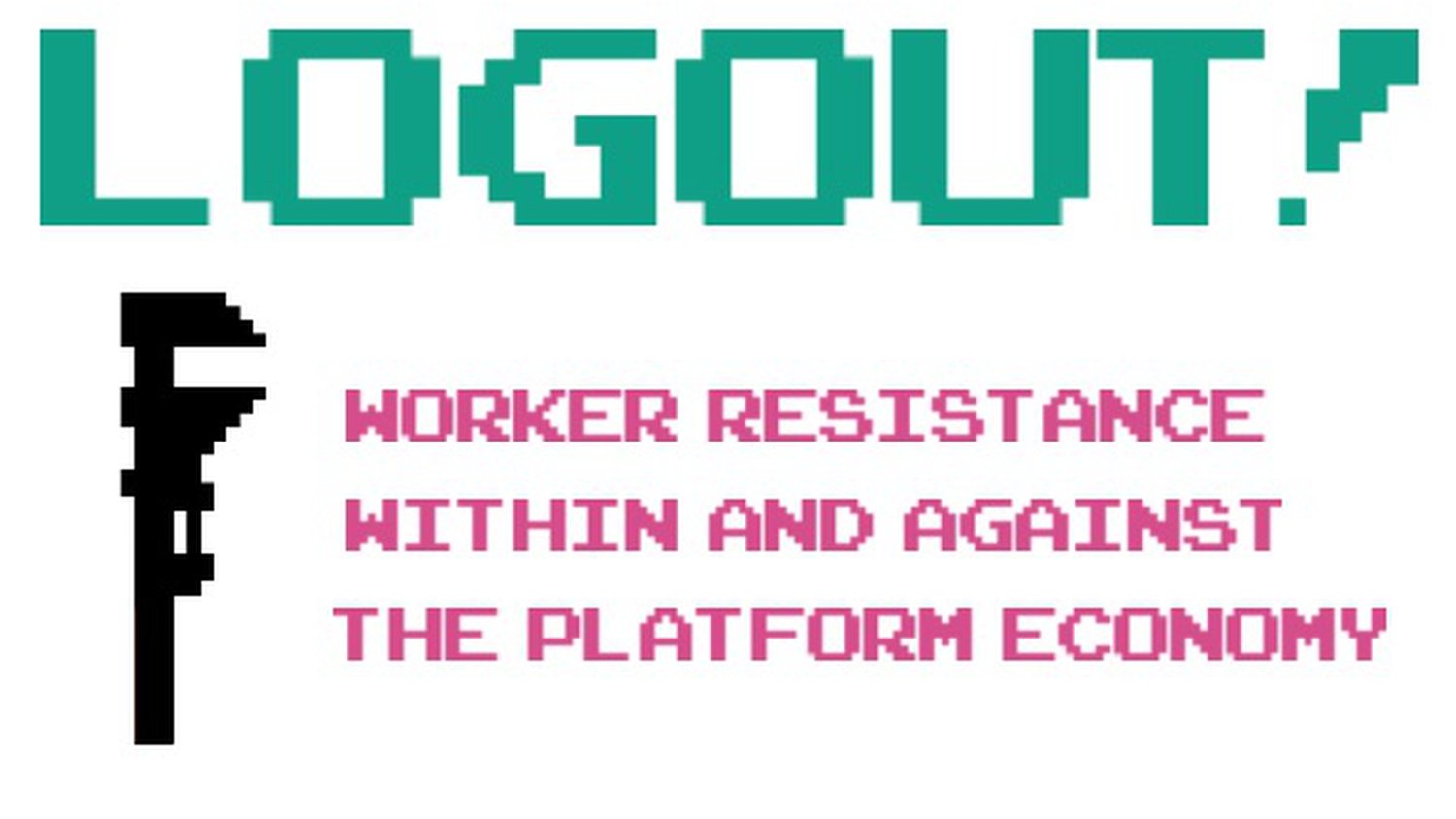
Image used with permission of the owner.
Similarly, alongside a few colleagues from Toronto and abroad, including academics and union organizers, we wrote an issue for Notes from Below, a British magazine focused on working-class perspectives. Entry #5, Log Out! The Platform Economy and Worker Resistance, edited by Alessandro Delfanti and Sarah Sharma, concentrates on forms of worker organization in the platform economy, from workers at Amazon warehouses in Canada and Italy to couriers for delivery platforms in England. This issue also discussed how workers could reappropriate digital tools in their favour and reflections on how to subvert platform power in an industry characterized by significant power differentials in which technology companies dictate how and when to work.
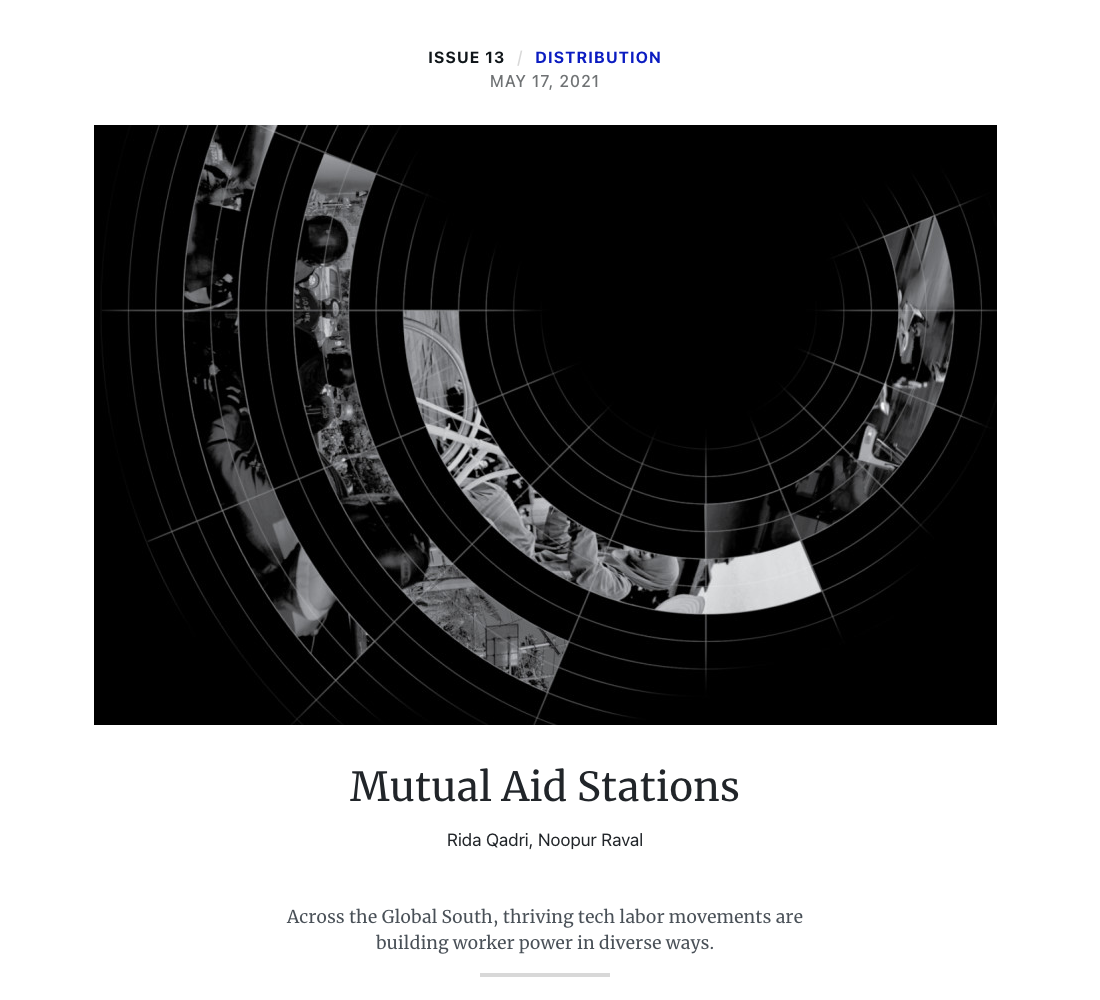
Image used with the permission of Logic Magazine.
What about the Global South? The experiences of workers in the gig economy are multiple and important to understand the phenomenon and how to counteract power imbalances. Entry #6 is the article for Logic Magazine Mutual Aid Stations, where authors Rida Qadri and Noopur Raval focus on how gig workers organize in Jakarta, Indonesia, and Bengaluru, India. These different contexts show how worker solidarity is ubiquitous. Their mutual support becomes necessary to circumvent detrimental policies of platforms, the limits inherent to these digital infrastructures, and local political and social constraints (notably in Bengaluru, where workers are migrants from other parts of the state).
The article also mentions the problems faced by the “single fighters” or workers who do not want or cannot join these organizations, including women who are a minority in the male-dominant population of app workers. The authors stress the fact that these worker organizations are not traditional unions. They say: “Often, in the analysis of gig worker power by academics and observers in the Global North, an absence of unionization is thought to indicate an absence of worker power. …This is not to argue that workers in the Global South do not unionize or that unions are unhelpful. Rather, they exist on a continuum of strategies to reshape work conditions, build collective worker identity and engage in mutual aid.” For this reason, I restate that these stories from the Global South are necessary to have a better understanding of the plurality of manifestations of worker power in the gig economy.
Part III: A Future of Migrant Labour
Technology can expand access to employment but also negatively disrupt migratory systems
I want to close this list with two readings that focus on two current technology applications that have potential disruptive consequences for migration. Technology is not only enabling new ways of outsourcing work to marginalized populations such as refugees, it also allows to import it.
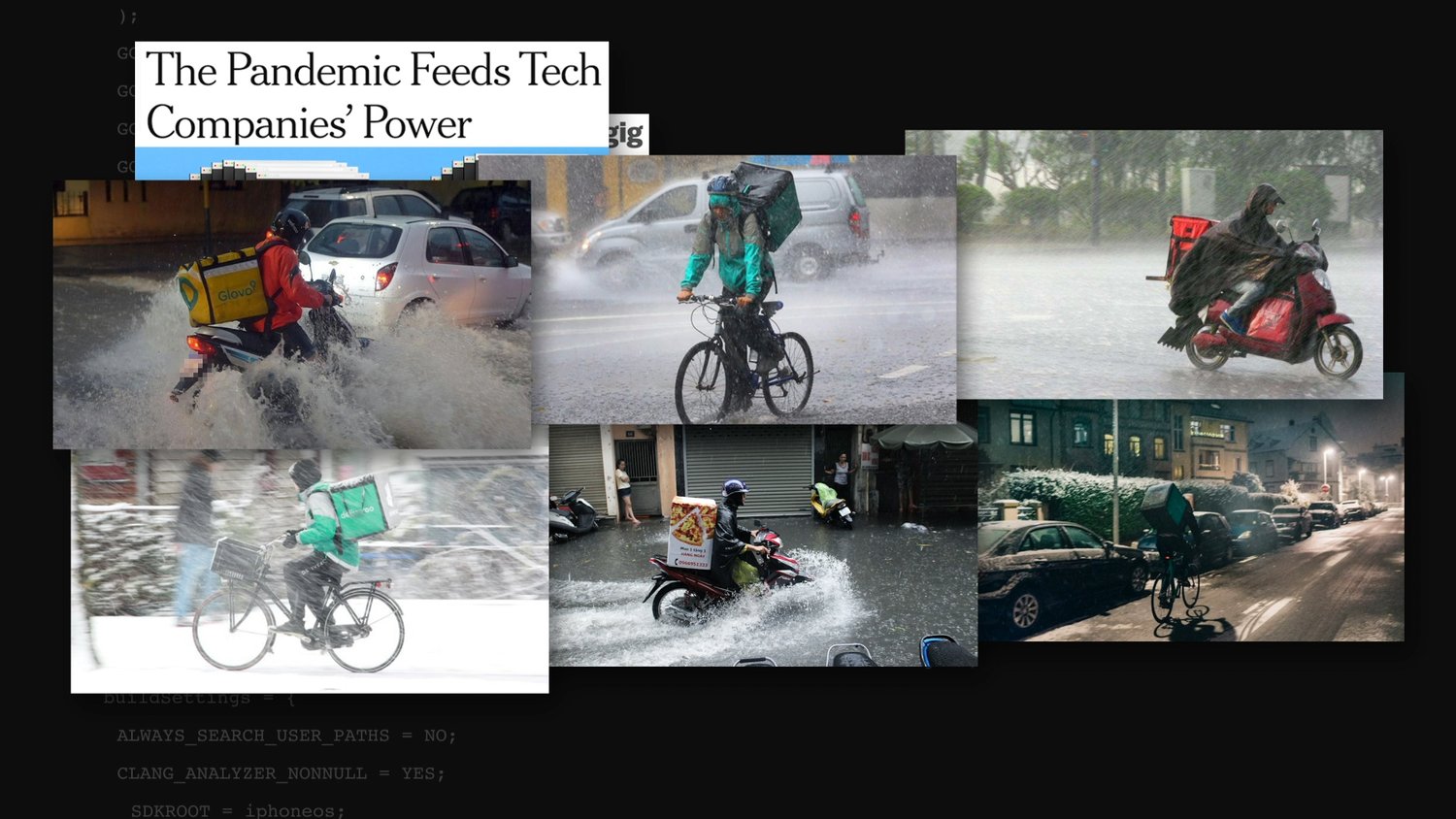
Riders Not Heroes (2021) still, screening at Mayworks Festival 2022
Entry #7 is a piece related to the topic of outsourced data production for artificial intelligence that I discussed earlier with the Venezuelan data work case. In this article titled Refugees help power machine learning advances at Microsoft, Facebook, and Amazon, published by Rest of World, a newspaper on technology and the Global South, researcher Phil Jones exposes how Syrian refugees in Lebanon’s Shatila camp do the same type of work done by Venezuelans through platforms: data generation, annotation, and verification, all tasks destined to train artificial intelligence and automated systems.
These initiatives are portrayed as a way to bring jobs to refugees, but they are also highly profitable for companies who gain access to a cheap and dependent labour force with less power than unionized local workers. This is something that journalist Karen Hao also discussed in this piece for the MIT Tech Review, which I am not including officially on this list because it is behind a paid wall.

Revolutionary Optimism by Sarom Rho for Mayworks 2022
Alongside Alessandro Delfanti and James Steinhoff, I am embarking on a new research project to look into remotely controlled robots. I am personally interested in cases where the workers are located in the Global South and the robots in advanced economies.
The last entry of this reading list, #8, Those four-wheeled robots on campus explained, introduces the Kiwi robots, which deliver goods in the University of California, Berkeley, and are remotely controlled by workers located in my home country Colombia. Once more, this type of technology allows for increasing job opportunities and for workers not to be constrained by their local labour markets. However, much like in the 2008 Chicano science fiction movie Sleep Dealer, widespread use of robotics to import labour and keep workers abroad can have disastrous consequences in policy for non-economic migrants like refugees.
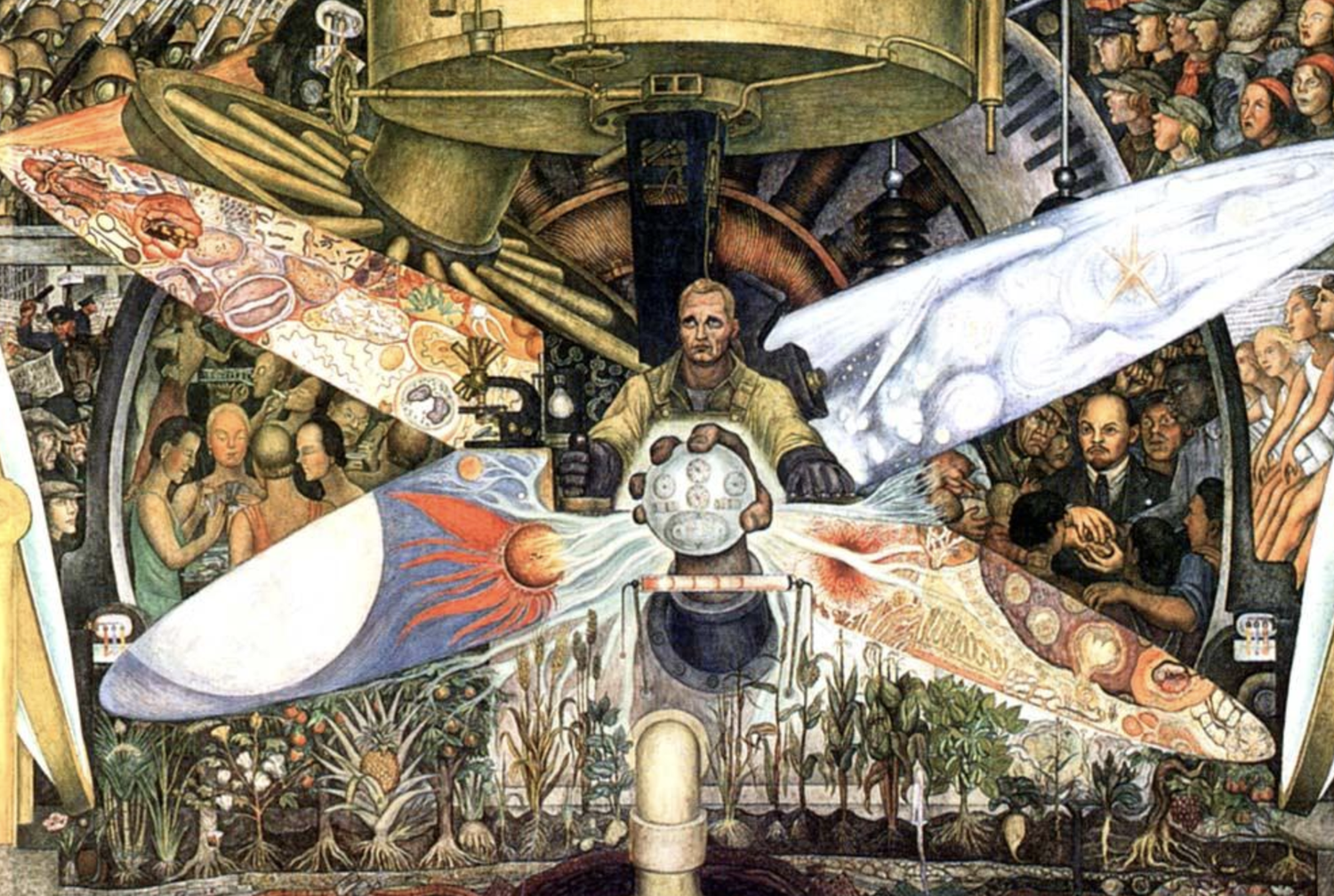
Detail of Man, Controller of the Universe. Image under Creative Commons license available on Wikimedia Commons
In Man, Controller of the Universe, the relationship between humans and technology can bring new opportunities but also can cause harm and increasing social inequalities. Much like Rivera positioning the marvels of technological development surrounded by the “crossroads” of society, including conflict and exploitation, our look into the effects of contemporary technology in society should not forget those directly affected by them and, especially, those who do not reap the benefits of technology.
JULIAN POSADA
Julian Posada is a researcher and educator currently finishing his Ph.D. in Information at the University of Toronto. In Summer 2022, he will join Yale University’s Department of American Studies as a postdoctoral associate and next year as an Assistant Professor in Critical Information Studies. His interdisciplinary research on the human labour needed for artificial intelligence has been published in the journals Information, Communication & Society and the Proceedings of the ACM on Human-Computer Interaction, and in chapters published by Oxford University Press and SAGE. As a scholar committed to public engagement, his work has also been featured in venues like Logic Magazine, Medium, and Notes From Below.

